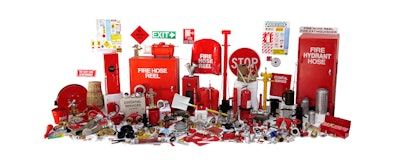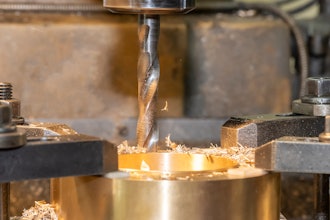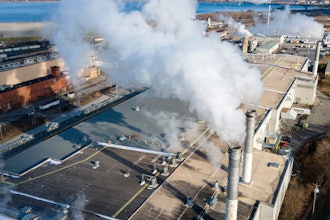
LONDON — Technavio analysts forecast the global industrial fire safety equipment market to grow at a CAGR of a little over 7 percent during the forecast period, according to their latest report.
The research study covers the present scenario and growth prospects of the global industrial fire safety equipment market for 2016-2020. APAC, EMEA and the Americas are the key regions of the market, which have been considered in the scope of the report.
According to Gaurav Mohindru, a lead analyst at Technavio for research on engineering tools, “The Middle East, which has an extensive presence of high-risk industrial sectors like oil and gas production and refining, is incorporating advanced technologies to tackle unforeseen fire and safety hazards. Across the Middle East, countries are integrating drones into their homeland security systems to fight fires and other disasters in high-risk industrial areas. These innovations may be integrated with the conventional industrial firefighting equipment in the near future.”
Technavio analysts highlight the following three factors that are contributing to the growth of the global industrial fire safety equipment market:
- Outdated infrastructure in oil and gas sector
- Redefined industrial safety codes and regulations
- Anticipation of future scenarios using fire protection analysis
Outdated infrastructure in oil and gas sector
The oil and gas industry is considered to be most dangerous and hazardous industry. The history of fire accidents in the industry has shown that careless actions have, many a time, led to catastrophic consequences.
For instance, 27 people were killed and 73 injured in an explosion at Algeria's Skikda LNG plant in 2004; the cause was a leakage of a large quantity of gas from a cold box exchanger that ignited when it was fed into the boiler.
This accident was in the downstream sector. In the oil and gas industry, the upstream sector, especially offshore drilling sites where many rigs manufactured before the 1970s are still in operation, constitutes the largest source of fires. The major concern thus lies with the downstream sector.
| The majority of the oil rigs are in the US, which has more than 3,000 operational rigs with 98% of the machinery being in operation for more than 30 years. |
These oil rig platforms are mostly equipped with traditional fire safety systems. After incidents like BP Macondo in 2010, the US government and the Coast Guard made it mandatory to install upgraded fire safety systems. The use of outdated machinery and fire safety systems will increase the demand for new fire safety equipment in the sector, thus boosting the growth of the market.
Redefined industrial safety codes and regulations
The development of new codes is in the process of initiation in many industries to ensure the safety of the work environment. The first step in such a development is conducting rigorous fire protection and operational analysis. The National Fire Protection Association (NFPA) is a US-based agency that coordinates with the community for fire protection to improve the efficiency of firefighters and provides a clear understanding of real-life fire accident scenarios. By doing so, the agency aims to develop the tactics and procedures needed for safe operations during accidents. Most industries like chemical, oil and gas and other prominent process industries are also upgrading their infrastructure with widely-used fire detection and suppression systems.
Anticipation of future scenarios using fire protection analysis
Earlier, a fire safety system in an industrial facility was installed with the primary aim of dealing with accidents after such situations had occurred. They were not designed to meet the future demands or circumstances. The number of equipment installed in a facility were insufficient not only in terms of the size of the facility but also with regard to the potential threats.
Codes relevant to industrial design are now updated based on rigorous and sophisticated testing standards rather than relying on traditional safety procedures.
For instance, the NFPA 2: Hydrogen Technologies Code governs standards for hydrogen equipment that is based on calculated flame hazards, which are caused by the system pressure and volume. The previous NFPA versions had regulations relating to standardized setback distances, which were calculated based on the exposure.






















